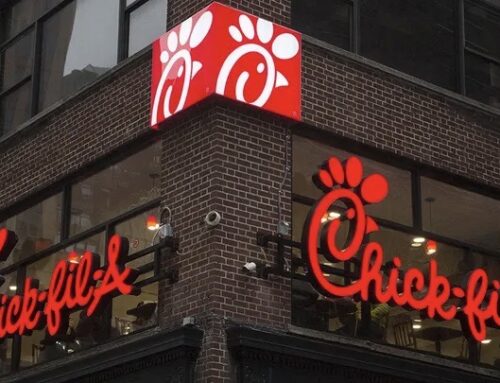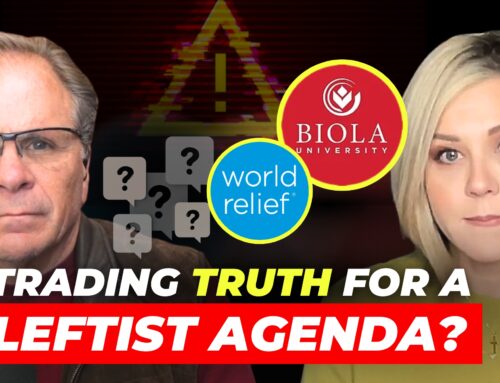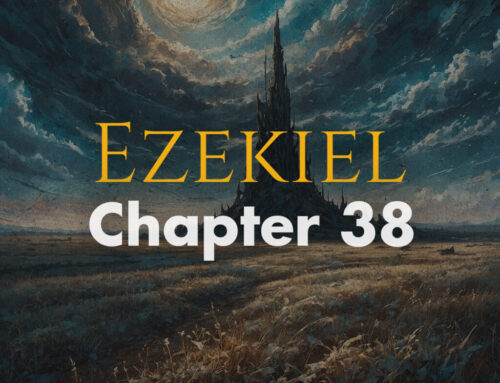America’s Economic Fault Line – The Five Cracks That Could Reshape Everything
November 04, 2025
By PNW Staff
Reprinted from Prophecy News Watch
While everyone’s attention is fixed on the government impasse over the budget and food stamp funding, there’s a much deeper issue brewing beneath the surface — one that could redefine the entire American economy. Behind the political theater lies a financial system straining under pressure, a workforce losing stability, households drowning in debt, and investors dancing on a dangerously thin wire.
Something is shifting — quietly, steadily — in ways that most people don’t yet see. And when you start pulling on the threads — liquidity, layoffs, debt, confidence, and market overexposure — the picture that emerges isn’t just worrisome; it’s systemic. What we’re facing isn’t a single crisis, but five converging storms that could merge into something far larger than anyone expects.
1. Liquidity Crisis — When the Financial Fuel Runs Low
Most people don’t think about “liquidity” until it vanishes. In simple terms, liquidity means cash — the kind banks lend, businesses borrow, and people use to pay bills. Without it, the entire system seizes up.
Right now, the financial system is showing strange signs of strain. Bank reserves — the cash cushion that keeps lending stable — have fallen to their lowest level in years. At the same time, the Federal Reserve has quietly stepped in with tens of billions in short-term loans to keep money moving behind the scenes.
When the Fed pumps that much cash into the system overnight, it’s usually because someone — somewhere — ran out of it. The question is: who?
If banks are struggling for quick cash, it means they’re holding assets they can’t sell or debts they can’t collect fast enough. When that happens, lending slows, business credit tightens, and economic oxygen gets thin.
Liquidity is the lifeblood of the economy. And when blood stops flowing, organs start to fail.
2. Mass Layoffs — The Human Cost of Economic Slowdown
The headlines tell a grim story. Over the past few weeks, major employers — from Amazon and UPS to Intel, Nestlé, and Accenture — have all announced sweeping job cuts, tens of thousands at a time.
Layoffs aren’t just numbers on a spreadsheet; they are the breaking of thousands of family budgets and dreams. When a job disappears, a mortgage payment vanishes with it. Confidence collapses. Spending dries up.
What’s even more troubling is that these layoffs are hitting across industries — retail, shipping, manufacturing, technology, and even white-collar corporate roles. This isn’t one isolated slowdown. It’s a signal that big companies are preparing for leaner times ahead.
And when large employers start trimming that aggressively, they’re not reacting to last quarter — they’re bracing for the next one.
3. Consumer Debt and the Vanishing Safety Net
For decades, Americans have been told to “keep the economy strong” by spending. But now, that very habit is backfiring.
Consumer debt has hit record highs. Car repossessions are climbing. Credit card balances are exploding. Many households are now paying double-digit interest rates just to keep groceries on the table. Even mortgages — once considered the “safe debt” — are slipping underwater as home values stagnate while rates soar.
A recent study found that nearly half of Americans spend their entire paycheck within 48 hours of receiving it. That means millions of people are living without any financial cushion at all.
When you live paycheck to paycheck, a single disruption — a layoff, a medical bill, a missed payment — can send your whole life into free fall.
We’re not just running out of money. We’re running out of time.
4. Confidence — The Invisible Engine of the Economy
Economies run on more than money; they run on belief. If people believe tomorrow will be better, they invest, build, and buy. If they believe the worst is coming, they pull back.
Right now, over half of Americans expect the economy to get worse. That fear alone can create the very outcome people dread. It’s the economic version of a self-fulfilling prophecy: if everyone stops spending, companies earn less, layoffs grow, and the slowdown deepens.
Confidence is like the wind that fills the sails of commerce. You can’t see it, but when it dies, the ship stops moving.
And right now, that wind is fading fast.
5. The Great Market Illusion — When Everyone Bets the Same Way
There’s another quiet danger hiding in the background — one that most investors don’t see until it’s too late.
For years, Americans have poured their savings into the same handful of tech-heavy funds, index trackers, and algorithmic strategies. On paper, it looks diversified — but in truth, everyone owns the same house built on the same fragile foundation.
The problem? When one part of that house cracks, the whole thing can collapse.
Recent market flash crashes and crypto sell-offs have shown just how fast modern markets can fall apart. Automated trading algorithms react in milliseconds, leverage multiplies losses, and billions can vanish before human traders even have time to log in.
Many investors didn’t just lose money; they lost access to their accounts during these meltdowns. Imagine that happening not in crypto, but across the entire financial system.
If the next shock hits — whether from a bank failure, global event, or technical breakdown — the herd could stampede again, and this time, there may be nowhere to run.
When One Crack Triggers Them All
Here’s the chilling truth: none of these five dangers exist in isolation. They are linked like dominoes in a single fragile chain.
A liquidity crisis makes credit scarce. That leads to layoffs, which hit spending. Falling spending deepens the confidence crisis, and people default on loans, driving up consumer debt. Those defaults ripple into the banks, worsening liquidity even further. And once fear grips the markets, overexposed investors start selling everything, triggering a cascade that makes all of it worse.
Each piece feeds the next. One failure can ignite all five.
It’s not an economic storm — it’s a perfect one.
The New Economic Order
So what happens if this fragile system finally breaks? What comes after the storm?
Perhaps we see a shift toward something more grounded — a return to smaller, community-based economies rather than the giant, leveraged behemoths that dominate now. Perhaps people rediscover the value of saving, stewardship, and real ownership rather than speculation.
Maybe it’s a wake-up call for investors to diversify beyond algorithms, for companies to value stability over speed, for households to rebuild financial resilience — and for leaders to remember that prosperity built on debt is not prosperity at all.
But change never comes painlessly. The old order rarely steps aside quietly.
If a new economic era is indeed emerging, it will be born not from policy papers, but from crisis — forged in fear, refined by necessity.
The coming year may test America’s financial soul. Will we keep trusting systems that grow by risk and illusion, or will we build something more enduring, more real, and perhaps more moral?
Because when the tide of easy money goes out — when the liquidity dries, the jobs disappear, and the markets crack — what’s left is what’s real.
And that, more than any number or index, is what will define the next chapter of the American economy.








Leave A Comment
You must be logged in to post a comment.